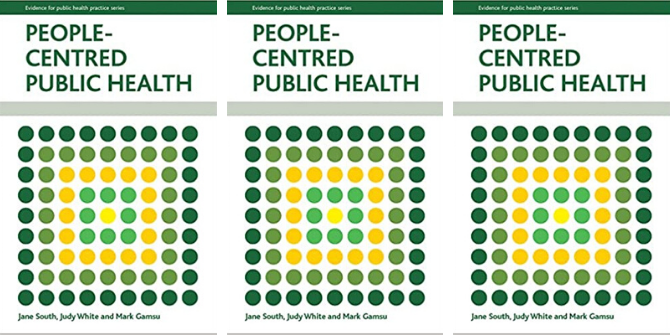In The Hologram: Feminist, Peer-to-Peer Health for a Post-Pandemic Future, Cassie Thornton explores the impact of COVID-19, neoliberalism and austerity politics on the US healthcare system, presenting ‘The Hologram’ as an alternative model of care based on solidarity, cooperation and interdependence. While unconvinced that the model is likely to be adopted on a global scale, Alanna Wurm found this a fascinating insight into one artist’s response to healthcare inequality that may become a much-needed network of solidarity for those excluded from their healthcare system.
The Hologram: Feminist, Peer-to-Peer Health for a Post-Pandemic Future. Cassie Thornton. Pluto Press. 2020.
 Over the past year, the COVID-19 pandemic has torn through almost every country in the world. The pandemic has put a spotlight on public health, revealing the deficiencies in healthcare systems across the globe and motivating politicians, policymakers and the public to reimagine the future of healthcare provision. In The Hologram: Feminist, Peer-to-Peer Health for a Post-Pandemic Future, Cassie Thornton explores the impact of COVID-19, neoliberalism and austerity politics on the US healthcare system, and presents an alternative model of care based on solidarity, cooperation and interdependence.
Over the past year, the COVID-19 pandemic has torn through almost every country in the world. The pandemic has put a spotlight on public health, revealing the deficiencies in healthcare systems across the globe and motivating politicians, policymakers and the public to reimagine the future of healthcare provision. In The Hologram: Feminist, Peer-to-Peer Health for a Post-Pandemic Future, Cassie Thornton explores the impact of COVID-19, neoliberalism and austerity politics on the US healthcare system, and presents an alternative model of care based on solidarity, cooperation and interdependence.
Thornton’s interest in collective healthcare began on a visit to Greece in 2017. Here she visited solidarity clinics that had been established in response to the Greek debt crisis. These clinics provided much-needed care to those who had lost healthcare coverage due to the Greek government’s strict austerity measures. Solidarity clinics aimed not just to provide free medicines, but also holistic, integrated care that focused on patient need. In one clinic, patients met with a general physician, psychotherapist and social worker or volunteer, who together would conduct a broad assessment with the patient to gain a holistic understanding of their healthcare needs. Thornton argues that ‘in contrast to the conventional ‘‘clinical’’, bureaucratic, service-oriented and hierarchical model’ of modern Western medicine, solidarity clinics centred around human connection, empathy and ‘compassionate attention’ (9). Drawing on her experience, Thornton set out to develop her own model of care that could provide similar support to individuals in the US.
Thornton’s model, ‘The Hologram’, consists of a network of groups who give and receive support. Each group comprises a triangle of three people, who meet on a regular basis to focus on the physical, mental and social health of a fourth individual. The triangle asks the individual about their health and wellbeing, creates space for them to share personal stories and supports them in making decisions. Participants in The Hologram act as a member of the supportive triangle for one group, and as the focus of support for a different group.
The book includes steps readers can take to create their own Holograms, providing sample questions and activities for individuals and groups. It suggests that participants should make an agreement with their Hologram group to meet at regular intervals for up to ten years. Thornton’s aim is that The Hologram will eventually become a network of care outside capitalism, in which participants do not expect payment for the care they provide and must not pay for the care they receive.

Photo by Pawel Czerwinski on Unsplash
From a policy perspective, it is difficult to see how The Hologram could achieve its lofty aims. The Hologram has no evidence base, and the book does not include an evaluation of the project other than poetic reflections written by participants – Stella Lawless, for example, discusses The Hologram in relation to tarot readings. However, no explanation is given as to why The Hologram has not moved beyond the pilot stage in the three years since Thornton began the project. Thornton describes leading a small pilot in 2018, which she planned to expand the following year. I was interested to learn about the experiences of those who had taken part in this pilot, about what constrained their ability to create their own networks and whether their participation altered their perception of conventional healthcare. However, nowhere are the experiences of these participants mentioned. Without these perspectives it is difficult to be convinced that readers should engage in a decade-long Hologram process themselves.
Given that Thornton is an artist, it would be unfair to entirely dismiss The Hologram due to its lack of scientific rigour. Indeed, Thornton explains early in the book that ‘The Hologram is identified as an art rather than a health project or a social science project’ (xiv). In the appendix, Magdalena Jadwiga Hartelova contextualises The Hologram and participatory art more generally within feminist ethics.
However, even as a feminist art project, The Hologram raises concerns. The Hologram is presented as ‘a non-coercive attempt to redistribute reproductive labour’ (97). Yet, The Hologram emulates existing forms of unpaid emotional and reproductive labour that have historically been performed by women. Thornton has, without explanation, excluded cisgender men from participation, explaining that The Hologram is ‘a network of women, non-binary and trans people and femmes’ (79). Thornton’s desire to create a radical system of support for women, trans and non-binary individuals is understandable. It would make sense for participants to have the option to create their own Holograms based on particular shared characteristics. Excluding cisgender men entirely, however, denies them the opportunity to participate in a potentially valuable support network. It also absolves these men of the responsibility to engage in emotional and reproductive labour, putting the burden of support once again on the shoulders of those who have carried out this work for centuries.
Beneath Thornton’s call for a radical upheaval of capitalism, there is a quiet current of desperation. Thornton notes that ‘when you feel powerless and poor it’s hard to imagine anything can be done’ (71). In the face of exclusion from her healthcare system, Thornton sought to create her own support network, admitting that ‘the tendency comes as much out of spite and competition as it does out of hope for a collective overturning of everything’ (71). Thornton explains that The Hologram is a ‘revenge fantasy’ (78), designed as much to exclude the powerful as to include the powerless. This deeply personal rationale is even more powerful than Thornton’s calls for revolution, painting a telling picture of what it means to live in a country that does not provide care for all its citizens.
The Hologram is unlikely to become a global revolutionary model of healthcare. Moreover, careful consideration is needed to ensure that it does not become yet another form of invisible reproductive labour in which the burden of care falls on women, trans and non-binary individuals. Nevertheless, The Hologram provides a fascinating insight into an artist’s response to healthcare inequality. In time, it may become a much-needed network of solidarity for those excluded from their healthcare system, in which participants can support one another to adapt to a post-pandemic future.
Note: This review gives the views of the author, and not the position of the LSE Review of Books blog, or of the London School of Economics and Political Science.







